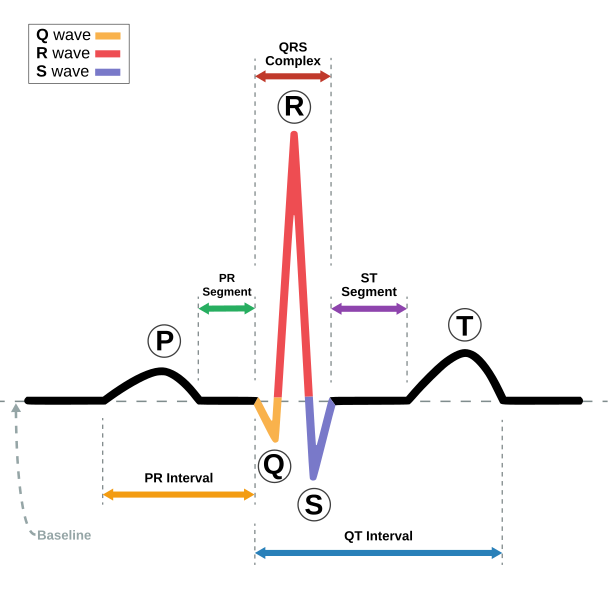Machine learning and ECG

By Sean Gilhooley, MBS 2020, Geisinger Commonwealth School of Medicine
Mentor: Gabi Waite, PhD
Ever wonder what those beeping boxes are on medical dramas? The things the doctor looks at once and then dramatically proclaims an illness like Sherlock Holmes thwarting Moriarty? The thing that beeps quietly in the background but stops solemnly to announce a patient has died. Most people likely know they're some type of heart rate monitor, but more specifically it is called an electrocardiogram or ECG. This device measures your body's natural electrical current and from it, medical professionals can identify all kinds of information about the heart such as heart rate, heart strength, if the heart has any weird parts that are beating on their own, or if the heart has any scarred and dead tissue. Traditionally, these ECGs are read automatically by a computer and later by the physician. While this has worked in the past, there is room for improvement. The computer can range from fairly accurate to wild guessing depending on what it is looking for while the physician is easily distracted by the smell of freshly made coffee at the nurses’ station. This is where machine learning comes in.
Now I know what you’re thinking, “I saw Terminator. I know where this is going!” Luckily, it’s unlikely these machines will rise up to overthrow humanity being they’re locked in a box on wheels chained to a bed. What they can potentially do, however, is increase the accuracy of the automatic computer reading of these ECGs without cutting into the doctor’s coffee time. These “machines” are actually just a computer program loaded onto the ECG telling the ECG what to look for each disease. Before being loaded onto the ECG machine, these programs must be trained first. This is where the “learning” in “machine learning” comes in.
The program is trained in much the same way a child is taught in school. You give the program a bunch of ECGs to look at, their “practice tests”, and then grade their performance on diagnosing each one. The program slowly learns what to look for as it strives for the highest grade on each “test” possible. In time, it will regularly score well, and the program will be ready to use in the real world.
Computing power has only recently become powerful enough to really handle machine learning, but scientists studying ECGs have quickly begun research into its effectiveness. Learning programs such as TreeBagger, which isn’t important to remember but I liked the name, were shown to have an accuracy comparable or even better than a physician when diagnosing left ventricular hypertrophy, a type of heart disease.
Another advantage of machine learning is that it allows the ECG computer to process more data at once. Typically, a full ECG, called a 12 lead ECG, requires multiple ECG readings from different parts of the body to generate a full picture of the heart. This allows for more in depth diagnosis as it provides more data to look at. Another research team managed to train a program to identify abnormal heartbeats, a feat usually requiring all 12 leads, using only a single lead. Machine learning made this possible by allowing the computer to keep track of previous heart beats and compare them to each of the patients’ subsequent heart beats, essentially training the program as it records.
Machine learning is even allowing ECGs to branch out from only looking for heart diseases and abnormalities. A team was able to generate a program that was capable of identifying high levels of potassium in the blood just based on the ECG reading in patients with kidney disease. Normally, while a doctor could use an ECG to identify this issue, common practice is to run serum tests which look at the composition of the patient's blood. This program, however, was able to accurately identify high potassium without requiring a blood test. Given the option between either wearing a sticker connected to a computer, or having a needle stuck in their arm and their blood taken out, most patients would likely prefer the former.
Machine learning is revolutionizing the medical world. ECGs are becoming more efficient and able to accurately diagnose a growing number of diseases. As long as we don’t start plugging our ECG machines into Skynet in the near future, machine learning will be a great boon to the medical world.


Comments
Post a Comment